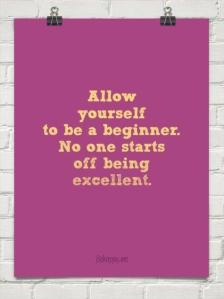The handout for my Beginning Research class is here.
No matter if you want enter an Arts & Sciences competition, or just up your game, you have to begin with documentation.
First – Remember that ideally we are doing research (investigative learning), not just documentation, which is writing up what you (think you) already know.
In general, think about answering the 5 Ws: What, Who, When, Where, Why (and How).
WHAT: What is the object? Is it a reproduction of an existing historical piece, a design based on similar period pieces, or an item common to the period using period techniques and materials?
WHO: What cultures used this? What class of people used it/made it? Were they used universally? Did the rich have versions made of more expensive materials? Was it used only by men? Women? Certain professions?
WHEN: When was it used? Does it have origins in earlier times? Was it only made during a certain era? Are there any materials/techniques/other circumstances that tie it to a specific period?
WHERE: What country or region was the item mainly found in? Do examples of a similar type turn up in distant and/or unrelated countries?
WHY: What was the object for? Is there any reason that this particular type of brooch/tool/siege weapon was especially suited to an area, culture, material, or function? Why is it important or unusual?
HOW: How did YOU make this object versus how was it made in period.
Materials/Techniques – make some comparisons. “I used modern paints to avoid the toxicity of lead” or “I could not afford silk for this Elizabethan gown, so I used X which has a similar drape and sheen.” are perfectly acceptable.
Pattern – how does this object differ from a period example? Why?
Keep an open mind. It’s ok if what you find doesn’t match what you wanted to find. You could be wrong. You could find something even better!
Research FIRST – THEN make. 🙂 Take notes as you go of what worked / what didn’t / where you deviated / what you learned from making / wearing / tasting. Documentation is not retroactive.
Strategy tips:
1) Learn the difference between primary (object or writing from the period), secondary (someone’s report of a primary source), and tertiary sources (someone writing about secondary sources). Linking to a Wikipedia article on tertiary sources was deliberate: If you figured out the joke you are on your way to being an awesome researcher!
2) Use Wikipedia for an overview, and to mine the footnotes for sources. Wiki articles themselves are of varying quality and should neither be depended upon nor cited.
3) Likewise, Pinterest can be useful to collect images, but be cautious of their origins. I often see modern or Victorian remakes labeled “Roman jewelry.” Sometimes old pieces are restrung – a peek a the clasp can help identify those. If you can’t find a reputable source (if it’s pinned by a pinner rather than a museum or respectable antiquities dealer) try Tin Eye or Google image search. If you can’t identify it for sure, save it for later research or abandon it.
4) Throw notes about what you’ve found into a Word doc as you go. This might include the page number and book of something you want to use, concepts to explore, or organizational thoughts. This tends to evolve into my outline (see documentation).
5) Remember to use Google books as well as general searches. If you can’t see the text of a book you need, try an interlibrary loan. You don’t *need* to purchase every book that touches on your topic, although most SCAdians (myself included) tend to do so.
6) Use scholarly words in searches to find more precise research. “14th century textiles” is better than “medieval clothes.” That goes for Google images, too. Actually, here’s a whole guide to using Google more efficiently!
Google Scholar will open a window into better articles.
7) Don’t forget to check Academia.edu…
8) JSTOR…
9) …and museum online collections.
10) Be careful with assumptions! Your modern mind will fill in details and explanations that may not exist. Remember to put yourself in their shoes to reduce unseen bias.

Still want more? Check these out. Here’s a great article by Laura C. Minnick. BTW, research isn’t just for physical objects like clothes or jewelry: The incomparable Eulalia Piebakere wrote a neat piece on researching food. Arlys O Gordon has articles on her blog, too.
For some tips on organizing your writeup, look here. And when it comes to entering a competition, read this! Expect that the judges will point out some mistakes. That’s their job. They *should* do it in a polite, constructive manner. 🙂
If you have any questions, please drop me a line!


Pingback: Champions’ Choice at Yule and a Survey | ROMANA SUM
Pingback: Writing Documentation | ROMANA SUM
Pingback: What makes it “period?” | ROMANA SUM